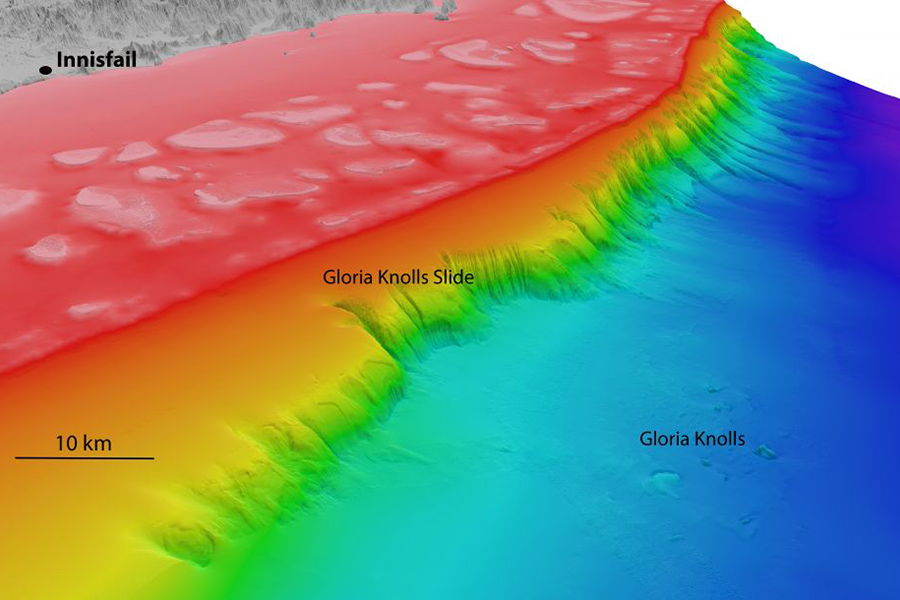Ancient landslide took a 'massive bite' out of Australia, say scientists
Loading...
A team of international scientists have gotten two discoveries for the price of one experiment: evidence of a cataclysmic underwater landslide in the distant past and a glimpse into a mysterious deep-water ecosystem.
An initiative to create a 3-D deep sea map of the area surrounding Australia's Great Barrier Reef led to the discovery of a series of puzzling underwater knolls almost 47 miles off the north Queensland coast.
Lying almost a mile below the surface, the hills measured hundreds of feet high and miles in length. Eight large ridges and a number of smaller "blocks" span nearly 20 miles along a stretch of the Queensland Trough seabed that was thought to be flat.
The research, which at least one scientist described as “a detective story,” focused on trying to shed some light on the origins of these blocks and knolls, which were first discovered in 2007.
"It's taken quite a number of cruises since to actually find the smoking gun [that reveals] where these blocks came from," James Cook University researcher Robin Beaman told the Australian Broadcasting Corporation.
Eventually the scientists, who hailed from Australia, Spain, and Scotland, were able to conduct enough surveys from the Southern Surveyor research ship to reach a conclusion.
"We now know that they belong to this very old underwater landslide, a huge feature actually ... It essentially looks like a massive bite has been taken out of the Australian continent," Dr. Beaman told ABC.
Dubbed the Gloria Knolls Slide, it’s the largest of seven undersea landslides uncovered by researchers in recent years.
But the unassuming name belies the violent nature of the "catastrophic" collapse, Beaman told the BBC. The landslide sent a massive piece of the landscape – 30 times greater in volume than Australia's giant sandstone monolith Uluru – tumbling as far as 20 miles from its original location.
Simulations of the event suggest that it had the power to unleash a tsunami taller than an eight-story building. The Great Barrier Reef, if it existed at the time, could have lived up to its name by dispersing at least some of the surge’s power.
As a bonus, the team also dredged up samples from the top of one of the knolls, which revealed signs of a surprisingly vibrant ecosystem, both past and present.
"When we brought a sample up there was a lot more marine life there than we ever anticipated, so that was a real surprise," Beaman told ABC.
While scientists have “a bit of an idea” what life is like in the shallow ocean shelf, hundreds of feet underwater, Beaman called these dark depths “the next frontier.”
The dredged sample, despite coming from complete darkness and frigid temperatures merely 7 degrees above freezing, was brimming with life, including cold-water corals, mollusks, and barnacles.
The team also found evidence of past inhabitants, including fossils dating back more than 300,000 years. These rockier-than-usual corals helped the scientists establish a lower age limit for the Gloria Knolls Slide, because any coral on top of the ridges must have grown after the hills arrived in their current resting place. Fortunately, no one was around to witness the landslide or a resultant tsunami, as the first humans likely didn't arrive until about 250,000 years later.
Beaman told ABC that this research could help understand how often similar undersea landslides occur, and whether or not they pose a risk to the now-populous Queensland coastline.
"It seems that there's a fairly low risk because when we put it into context this is a very old feature, but it's an area of interest we would like to explore a bit further," he said.
The calamity’s trigger is unknown at this time, but preliminary work suggests an unusually large “seismic event,” a coastline-shaping force all too familiar to neighboring New Zealand.






